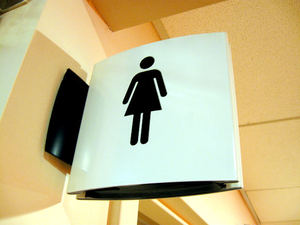We all know what it feels like – that ‘time to start looking for a bathroom’ feeling. Urinary problems are more common among women than men. Maybe this is because we pay more attention to things ‘down there’ or maybe it is because our urethra is about 8 times shorter than a man’s. For whatever reason, we tend to take that ‘gotta pee’ feeling pretty serious. Just how serious is that urge really?
Urination Cycle
Urination is a 2-step procedure: First, urine is stored in the bladder and second, the bladder empties. Most bladders can hold between 350 and 550 mL of urine before accidents happen. The bladder starts to send warning signs to the brain at about half capacity. So what does this mean? That first urge to urinate is actually more of a ‘heads up’ than a command!
Proper urination behavior requires the urinary tract and nervous system to be working in unison. This means body and brain need to understand each other. For most people this is the case. However, some people have a properly working system but misunderstand the signals they receive. If you always give in to that initial urge to urinate, you could begin to have trouble with your urination cycle. Panic makes that urge worse, it can cause spasms in your bladder and urethra which can cause leaks. If you always yield to the first urge but one day can’t find a bathroom during that time – you could have an unnecessary accident. You should consider changing your habits if this is a frequent fear.
Some Advice
Advice recently given to me by Eastern Carolina Urological Associates included information about the ‘urgency wave.’ The wave is an explanation of what to expect from your body. In a normal person, the urination cycle will start with the signal to urinate. After this signal is sent the urge will grow until it peaks, after which it will subside and disappear! The trick is getting yourself through the wave. ECUA suggests sitting still, squeezing the pelvic muscles in short bursts, and doing something to distract yourself until the urge disappears.
If you think you may have a bladder condition, such as overactive bladder (OAB), speak with your physician. If you are diagnosed with OAB they will most likely suggest bladder training to help strengthen the bladder muscles (and your will power when it comes to urination urges).
Bladder training is just what it sounds like: you training your bladder to behave. You start by creating a schedule of urinations. You can try going to the bathroom every hour on the dot. This works because whether you feel the urge to urinate at 3:15 or 3:45, you know you have to (and can) hold it until 4:00. This teaches you to hold urine for short amounts of time, so you can one day hold it however long you need.
A Note From This Contributor
My interest in understanding bladder urges came from a personal journey with Urethral Diverticulum. UD can cause urinary dysfunction as well as vaginal pain. If you have one or more of these issues, consult a physician and schedule a pap exam to rule out more serious problems.




